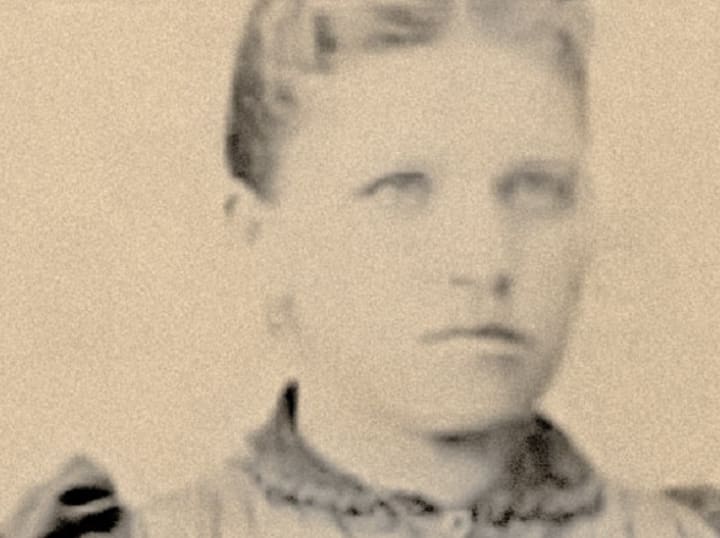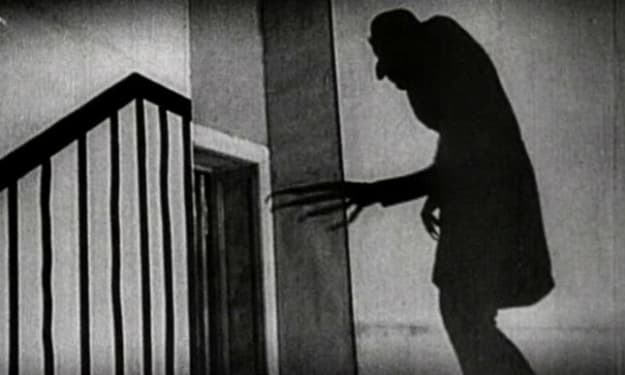
Vampires, werewolves, and time travelers—the stuff of horror movies, comic books, and bad television pilots, typically for shows that last about ten episodes before finding their way to the mass grave of cancellation, never to be resurrected. Such beings exist only in the childish fantasies of writers and artists, dreamers and gamer-geeks who refuse to grow up—or grow old. Right?
Not exactly. There are a few cases of such people—legendary people, extraordinary people, but people, nonetheless—some of whom can be demonstrated to actually have lived; and yes, they were believed and rumored and said to share the attributes of science fiction and horror movie MONSTERS. (And time travelers. And prophets. And "green children," too.)
Some are individuals so mysterious that they seem to have emerged, seemingly from out of nowhere, to tantalize us with the mystery of their being, of their child-like, otherworldly innocence and ignorance of "our world." Such was the young man called by history KASPER HAUSER.
Kasper Hauser

Kasper Hauser
In May 1828, in Nuremberg, Germany, a strange young vagrant wandered into town carrying two letters. The first, a mysterious missive from a strange man, claimed the boy, who was little more than sixteen, had been raised in complete isolation; but "Now wanted to be an infantry man[...]like his father." The second letter was purported to be from the boy's mother; both letters were later believed to have been written by the young man himself.
The boy, calling himself "Kasper Hauser" seemed curiously unacquainted with the world about him, and related a tale of being raised in a small cell with a straw mattress, and being fed by a man who was always careful to hide his face from him. As Alice would say, "Down the rabbit-hole we go!"
The boy aroused much attention and speculation, particularly in regards to the possibility he was some branch of the Baden monarchy, or a deposed and abandoned boy of royal lineage. Cared for by a philosopher and physician, he was known to have a good capacity for art, but also was vain, petty, and known to lie. On the 17th of October of 1829, he was wounded, by a "masked assailant," while sitting on the toilet. April 3 of the next year, he suffered an unaccountable accident with a pistol. Both times, it was generally surmised that Kasper Hauser, for some unknown reason, was wounding himself.
Finally, while being cared for by a man named Feuerbach, a teacher (later, it was revealed this man wrote of Hauser, "Caspar Hauser is a smart scheming codger, a rogue, a good-for-nothing that ought to be killed."), Kasper was wounded by the same "masked stranger" who left a note written in a mirror (reversed) which read:
"Hauser will be able to tell you quite precisely how I look and from where I am. To save Hauser the effort, I want to tell you myself from where I come _ _ . I come from from _ _ _ the Bavarian border _ _ On the river _ _ _ _ _ I will even tell you the name: M. L. Ö."
Death of Kasper Hauser

"Mill Pencil drawing," by Kasper Hauser. Circa 1832-33.
Kasper Hauser died on the 17th of December, 1833. He remains, to this day, an enigma. Some claim he was of royal lineage and unwanted; others, that he stepped through a doorway from an alternate dimension, perhaps one where such strange and mysterious individuals as himself were commonplace. The world will never know.
Mercy Brown

The gravestone of Mercy Brown, a young girl believed to be a true-life New England VAMPIRE.
The subject of vampires usually conjures up images of craggy cliffs and crumbling castles in movies as old as an undead bloodsucker. They do NOT typically conjure up images of quaint New England hamlets like Exeter, Rhode Island. That is, however, where the story of one Mercy Brown, a young girl believed to be an honest-to-badness VAMPIRE, transpired. Long ago, of course, but not so long ago: 1892, to be precise.
Mercy's mother and sister (Mary and Mary Olive, respectively) both developed a weird, wasting illness, each succumbing to the disease in the late 1880s. Later, both Edwin Brown and his little sister, the poignantly named "Mercy," would also develop the poorly-understood tuberculosis (called "consumption" in those bygone days). Mercy would die; Edwin would grow, progressively, very, very sick.
Stolid New England gentry, hailing from good, all-American, Yankee stock, pronounced that a VAMPIRE had to be at work. And, despite the fact that they were living in 1882, NOT 1482, they were readily...believed. Which just goes to show you the power that belief can have to dispel reason.
The cemetery was entered, and the bodies of the deceased Brown women were exhumed. Unsurprisingly, both of them had deteriorated in their sepulchral bedchambers, in an expected manner, over the long, dark years. No bloodsuckers there.
Then, the above-ground crypt was rifled for the body of Mercy. Bingo! Bats in the belfry! Mercy was, most decidedly, NOT decomposing in a reasonable and timely manner. Blood in the heart, blood in the neck... Looked as if she could get up and walk away.
(Of course, reasonable people will point out she had been interred in a VAULT in the winter time, and this, more than anything, might have retarded decomposition. But why let that get in the way of having a good time, eh?)
Mercy's dead heart was extracted from her body, taken to a stone slab at the corner of the boneyard, burned, and then mixed with water. Edwin Brown then DRANK this noxious mixture. You know, to cure his vampirism.
He really shouldn't have bothered; he died anyway, just a couple of months later.
But Mercy, or, at least, the LEGEND of Mercy, lives on.
Emily Isabella Burt, "The Georgia Werewolf Girl"

Young Emily Isabella Burt was said to literally suffer from the rare mental disease Lycanthropy, the "Werewolf Disorder."
"As mad as a full moon lunatic," might be the way someone would describe young Victorian miss Emily Isabella Burt, the "Georgia Werewolf Girl" of legendary repute. Brooding, solitary, she apparently spent her spare hours at the library studying ghosts and the occult. (That they are said to have had such books readily available in their collection, so long ago, speaks volumes about the veracity of this tale.)
She was said to be "hairy," have "bushy eyebrows," an unsmiling and sullen demeanor, weird, solitary habits... None of which, we might remind our readers, adds up to being a werewolf. BUT—she was, furthermore, said to like the occasional nosh of raw meat.
She complained of nightmares and weird, poltergeist-like phenomena around her at bedtime. Also, sheep and animals were wont to be slaughtered when she disappeared at night, going off alone, beneath the silvery moon.
Her behavior finally became so bizarre she was sent to Paris by her worried, widowed mother, to see a specialist in hypnosis. While she was abroad, the animal mutilations ceased.
Upon returning, seemingly cured of her lycanthropic tendencies, young Emily Isabella embarked on a normal life., She died in 1911, aged 69, a wealthy, prominent, local businesswoman.
Edward Mordrake
The story of "Edward Mordrake," a horrifically afflicted member of British peerage, is one that is both comic and grotesque. Did Edward really live? Most compassionate and sane people will say, "Let's hope not!"
Edward was deformed, the victim of a conjoined twin, a fully formed face on his head, with weird, piercing eyes, and a jaw that was fully functional.
The eyes were said to follow visitors (that he had any is as astonishing as the tale itself) around suspiciously. The jaw would chew; and, worse; the damn thing is said to have been sentient, and even more worse, it SPOKE.
What, you may ask, did it say?
It namely spoke blasphemies against God, and imprecations against the tortured Edward himself. His distinguished family, no commoners they, kept him hidden in a disused attic room, like a dirty secret from a gothic novel, and let his demonic twin torture him, psychologically, to madness.
Finally, Edward is said to have taken his own life with poison. We imagine the life of "Little Eddie" was snuffed out as well.
"[The twin]...never sleeps, but talks to me forever of such things as they only speak of in Hell. No imagination can conceive the dreadful temptations it sets before me. For some unforgiven wickedness of my forefathers I am knit to this fiend – for a fiend it surely is. I beg and beseech you to crush it out of human semblance, even if I die for it." - Edward Mordrake
Mordrake was buried in a barren, dreary tract of wasteland with no marker. Or so it is said.
Rudolph Fentz

"Rudolph Fentz" is a man said to have stepped through a portal and traveled through time. He died in New York City, in 1951.
Does life, occasionally, imitate art?
In the old movie Time After Time (1979) H.G. Wells (Malcolm McDowell) chases Jack the Ripper (David Warner) through time to modern San Francisco. In one pivotal scene, Warner is struck by a car and thought by McDowell to have died.
New York City, Times Square, 1951: A strange man appeared, dressed in 19th-century clothing, in the middle of a crowded sidewalk. Struck by a car, he was rushed to a hospital. Later, he died from his injuries.
Upon examination of the man, it was found that he was carrying some unusual items, items that suggested he was, in a chronological sense, in the wrong place, at the wrongtime. (Emphasis on that last.)
He was identified as one "Rudolph Fentz." These are the items he is often said to have been carrying.
- A copper token for a five cent beer, drawn on a saloon the memory of which vanished into the mists of local history.
- A bill for the care of his horse and buggy.
- His business cards (how they ascertained his name was, indeed, Rudolph Fentz).
- Seventy dollars worth of old banknotes.
- A personal letter dated June 1876.
Let that last one sink in. All of these antique items seemed curiously...new. As the story goes, a "Captain Herbert V. Rihm" investigates, finds no fingerprints on file, no missing persons of a "Rudolph Fentz," but finally manages to find a 1939 phone book with a man with a similar name. Going to this tenement address, he finds a widow, who explains that her late husband's father disappeared in Philadelphia in 1876, having gone out one evening after dinner, never to return (much as Oliver Lerch and Orion Williamson are said to have done in similar tales).
Checking through missing persons reports from 1876, Rihm finds a Rudolph Fentz matching the exact description of the dead man. Time travel?
Note: This story has been supposedly debunked as originating from science fiction stories by either Robert Heinlein or Jack Finney, and passing into urban folklore via the paranormal book and television industry—Or, maybe its all true!
Life imitating art?
Mother Shipton

A carnival mask image of "Mother Shipton", a prophetess said to have predicted all marvels of our modern world.
Ursula Southeill, more commonly known as "Mother Shipton," was a supposed prophetess, said to have lived between 1488 and 1561. She was said to, also, be exceedingly ugly and stereotypically witch-like. A collection of her prophecies, mainly local stuff, was published eighty years after her death. In it though was found one or two rather startling prognostications:
Seeming to predict cars and radio communications:
"Carriages without horses shall go,
And accidents fill the world with woe.
Around the world thoughts shall fly
In the twinkling of an eye."
Also, Mother Shipton seemed to predict submarines or deep-sea diving, airplanes, war, calamity...and the end of the world.
In 1981.
(Hey, no one can be right all the time, can they?)
The "Green Children" of Woolpit

The story of the "Green Children" of Woolpit leads some to believe in the possibility of alternate dimensions.
Sometime in the twelfth century, in Woolpit, England (during the reign of King Stephen, according to William of Newburgh) two strange children appeared suddenly. Curiously, their skin was a bizarre, olive-colored tint of green, and they did not speak English; they spoke an unknown tongue. All they would eat, reportedly, were beans.
The boy became ill, dying shortly thereafter. The girl-child, though, survived, learned English, and became a "wanton, impudent" serving wench who later married a government official. (As for her "wantoness", it was, after all, the eleven hundreds. We must assume she wasn't exactly spending her time twisting the night away listening to pop tunes.)
She explained that they had come from a land where "everything was green," and the sun rarely showed. This was intimated to be someplace BENEATH the crust of the Earth, a place she referred to as "St. Martin's Land."
Tending their father's cattle, upon hearing church bells, the children followed the beasts into a cave. Voila! They found themselves transported to tiny, obscure Woolpit, on "our" side of the dimensional portal.
Some have speculated the children came from a subterranean world that exists beneath us; others, that they emerged from an alternate world or dimension. Some conspiracy theorists such as David Icke believe in subterranean bases and similar concepts; Edward Bulwer-Lytton wrote about something similar in his classic The Coming Race, said to have been a prime influence on Nazi "Master Race" theorizing. But I digress.
In conclusion, we can ask ourselves: Is any of this true? In answer: the first three personages here (Kasper Hauser, Mercy Brown, and Emily Isabella Burt) can all be proved to have really lived, while the others are legendary at best.
Be that as it may, their stories are true in so much that they will live on in the dreams and fears of those who eagerly trade them with their friends, or pass them on as gospel writ. In that sense, ANYTHING and EVERYTHING COULD be true...and probably is. C'est la vie!
About the Creator
Tom Baker
Author of Haunted Indianapolis, Indiana Ghost Folklore, Midwest Maniacs, Midwest UFOs and Beyond, Scary Urban Legends, 50 Famous Fables and Folk Tales, and Notorious Crimes of the Upper Midwest.: http://tombakerbooks.weebly.com






Comments (2)
Definitely weird. Disturbing & interesting, but. weird! Well done. :)
Quite an interesting collection of stories. I really enjoyed the story on Kasper Hauser and his pencil drawing was quite phenomenol. I was also taken by Edward Mordrake. His story vaguely reminds me of The Elephant Man. I will be checking out more about him.